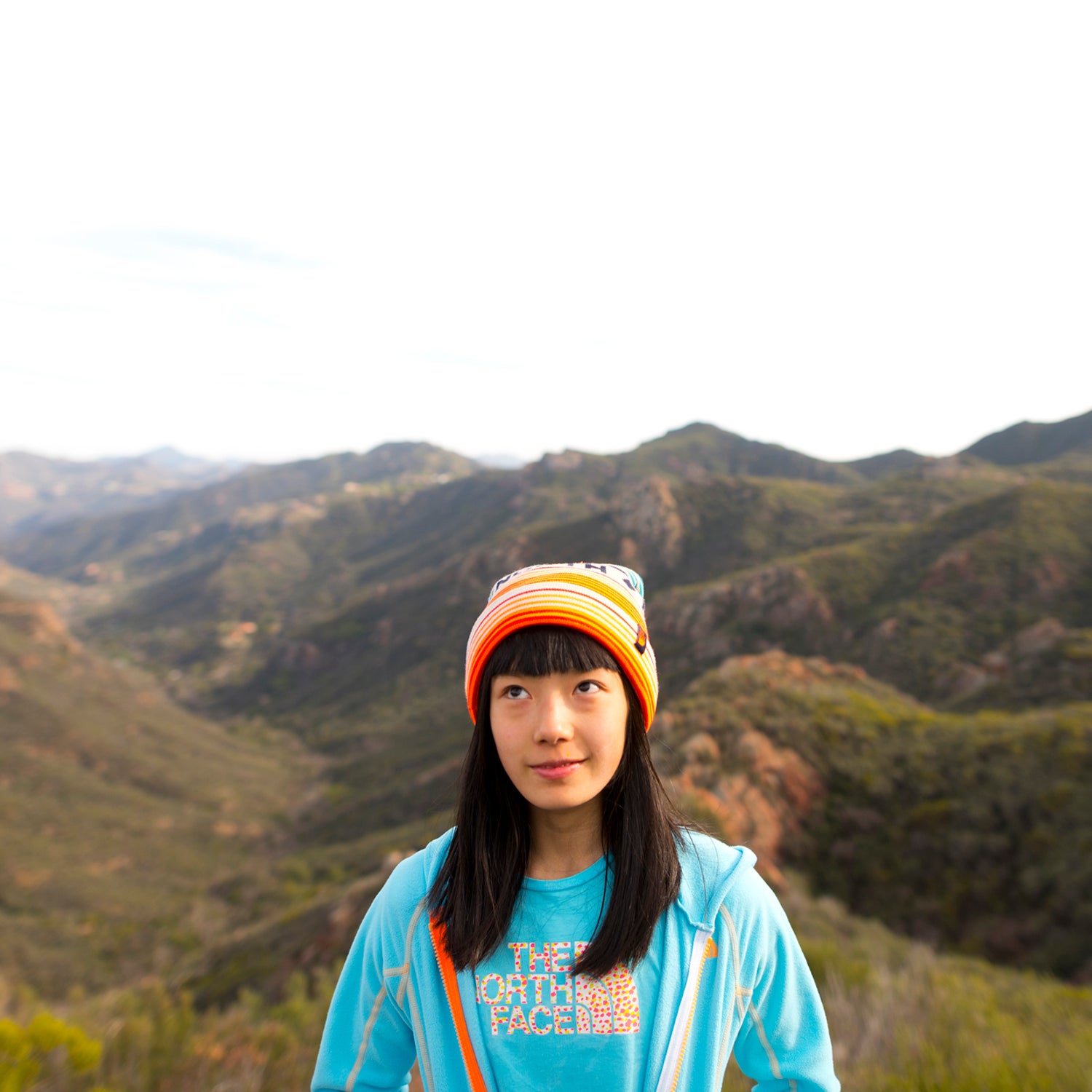Every day after school, 15-year-old Ashima Shiraishi heads to Brooklyn Boulders indoor climbing gym to train. She usually climbs for three to five hours, and then heads home to her parents’ rent-controlled apartment in downtown Manhattan to do homework, before hitting the sack at 1 a.m. The only hiccup in her otherwise consistent routine? Lately, the route setters at the gym can’t seem to set a problem that will actually stump the teen prodigy.
The reason for this is simple: When it comes to climbing on plastic, Ashima rarely falls.
Perhaps this helps to explain, though in no way justifies, her father’s recent unfortunate mistake. As his daughter’s regular belayer and coach, Hisatoshi “Poppo” Shiraishi arrived at the Stone Summit climbing gym in Kennesaw, Georgia, a week in advance of the 2016 USA Youth Nationals competition. While completing a routine training climb, Ashima uncharacteristically fell. Her father, surprised, squeezed his belay device in such a way that it prevented it from working correctly. He watched his worst nightmare unfold before his eyes: His daughter dropped from 45 feet straight to the ground.
Ashima was taken to the hospital as a precaution, but doctors released her later that night. She was sore, shaken—but ultimately, miraculously … OK.
“My ground fall made me less confident in my climbing and scared to do dynamic moves,” she said.
The feeling didn’t last long. A week later, Ashima managed to overcome those mental barriers, shake off the jitters, and stand atop the podium with a first-place finish for her age category. “I was able to tackle my fears of committing to dynamic moves from simply focusing on climbing and to forget about my fall,” she said. It’s a familiar spot for the Japanese-American prodigy. Six months earlier, in January, she handily won the USA Youth Bouldering Nationals championships for her age. Adding the win in Georgia gave her the rare distinction of being both a bouldering and sport-climbing champion.
She’s been just as impressive climbing outside. During a spring break trip in March to Japan, she climbed “Horizon,” a V15 boulder problem. This made her the first woman ever to achieve that level of difficulty in bouldering, a discipline that generally favors power, reach, and height. Ashima is barely 5 feet tall, and weighs less than 100 pounds.
In August, Ashima traded in the rope and harness for another bouldering trip where she headed to the Grampians, Australia. After three days of climbing, she managed to tick her second V15 with “Sleepy Rave,” which climbs directly out the underside of a horizontal roof. “Personally I thought that ‘Horizon’ was harder than ‘Sleep Rave,’ ” Ashima said.
While in Australia, news broke that climbing would officially become an Olympic sport in the 2020 Games in Tokyo, the country from which Ashima’s parents emigrated in the 1970s to pursue careers in dance and fashion in New York City. “Since I even began rock climbing, my dream has been to one day become an Olympian,” she said. “Now that climbing has been accepted, my dream may come true.”
Obviously, she’s excited to compete and won’t stop at anything that holds her back from that gold medal. One problem may be that speed climbing, which Ashima has never competed in, is part of the new Olympic format, which will give one medal for combined scores in speed, bouldering, and lead/sport. While many top climbers have grumbled about giving one medal for three disparate disciplines, Ashima has embraced the challenge. “I plan on training to speed climb and compete in the World Cups next year,” she said. “I believe that competing and climbing outdoors will prepare me for the big event.”

